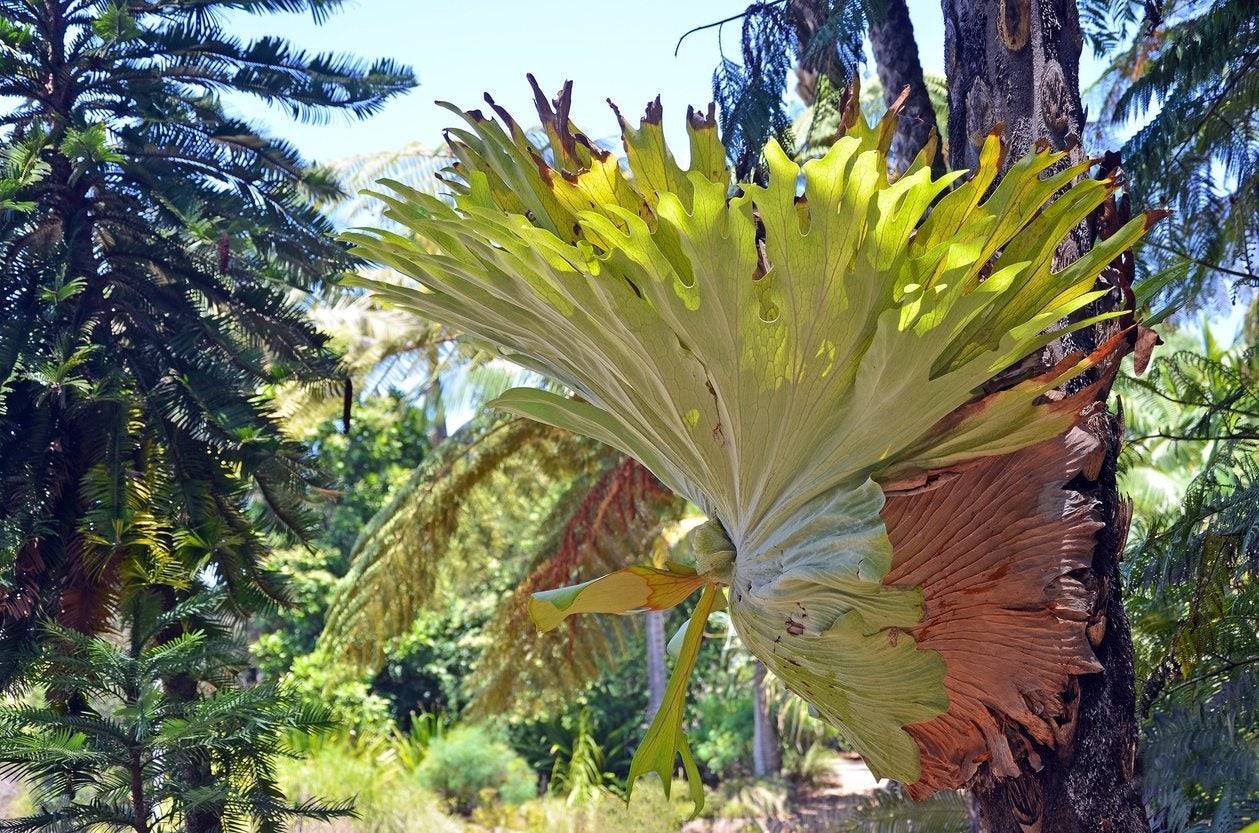My Staghorn Fern Is Turning Yellow: How To Treat A Yellow Staghorn Fern

“My staghorn fern is turning yellow. What should I do?” Staghorn ferns (Platycerium species) are some of the most unusual-looking plants home gardeners can grow. They can also be expensive, and some species are hard to find, so it’s important to catch any problems early. Read on to learn how to keep yours healthy.
Causes of Staghorn Fern Turning Yellow
Don’t worry about occasional yellow fronds on a staghorn if the plant still has many green fronds and appears healthy. The yellowed fronds should be quickly replaced by growing green fronds. It is also normal for the basal fronds (those that wrap around the base of the plant) to be partially or entirely brown. Yellow fronds on a staghorn could be due to watering or humidity problems. Overwatering can cause yellowing, rotting, or mold on the plant. Low humidity or lack of watering might also gradually cause fronds to go yellow. Pest problems are another possibility. Check your ferns for pests such as mites and scale insects. Provide your staghorn ferns with filtered light or bright shade. Full sun can burn the leaves and cause discoloration. Indoors, make sure the room is not too dim, or fronds may turn yellowish due to lack of light. Appropriate sun conditions are easy to provide if you mount the fern under a tree canopy or on a partially shaded patio. Yellowing staghorn ferns might be nutrient deficient. Fertilize staghorn fern plants with a balanced liquid fertilizer each month during the growing season. Also, feed the fern with organic matter – even a banana peel placed among the fronds works.
How to Treat a Yellow Staghorn Fern
Very yellow fronds on a staghorn should be pruned out. Simply cut the yellow antler frond near its base, avoiding damage to other fronds. However, if many fronds on your fern have gone yellow, you’ll need to change something in the fern’s growing environment. To prevent more damage to yellowing staghorn ferns, take measures to improve their overall health. Correct any watering or drainage problems. Many species require a humid environment but can be damaged by overwatering. Mist the leaves frequently when the air is dry. Water when the mounting medium is dry but be sure the medium is able to drain quickly to prevent rot problems. As epiphytes (plants that grow high in trees or on rocks, often out of contact with soil), staghorn ferns will do best if they’re mounted to a board, tree, or other surface, or placed in a hanging basket. If you grow yours in a pot, be sure the growing medium is very well drained and airy. Sphagnum moss and bark chips sold for growing orchids are good choices. You can also include compost or a small amount of potting soil in a hanging basket mix but be sure the mixture drains quickly.
Gardening tips, videos, info and more delivered right to your inbox!
Sign up for the Gardening Know How newsletter today and receive a free copy of our e-book "How to Grow Delicious Tomatoes".
Ilana Goldowitz Jimenez is a scientific and agricultural writer with a B.S. in Plant Sciences from Cornell University and a PhD in Chemical Biology and Infectious Disease from Harvard University.
-
 How To Make A Bouquet Garni Or Herb Bundle For Cooking
How To Make A Bouquet Garni Or Herb Bundle For CookingIf you’re a great cook, you may have made an herb bundle before. If this is a new idea, learn how to add sparkle and interest to your dish with a bouquet garni.
By Amy Grant
-
 ‘Coral Charm’ Peony Care For Sublime Semi-Double Peonies With Lush Salmon Pink Flowers
‘Coral Charm’ Peony Care For Sublime Semi-Double Peonies With Lush Salmon Pink FlowersPeonies are known for their soft baby pink or magenta tones, but if plushy coral blooms are your thing, here’s our guide to the ultimate ‘Coral Charm’ peony care
By Tonya Barnett